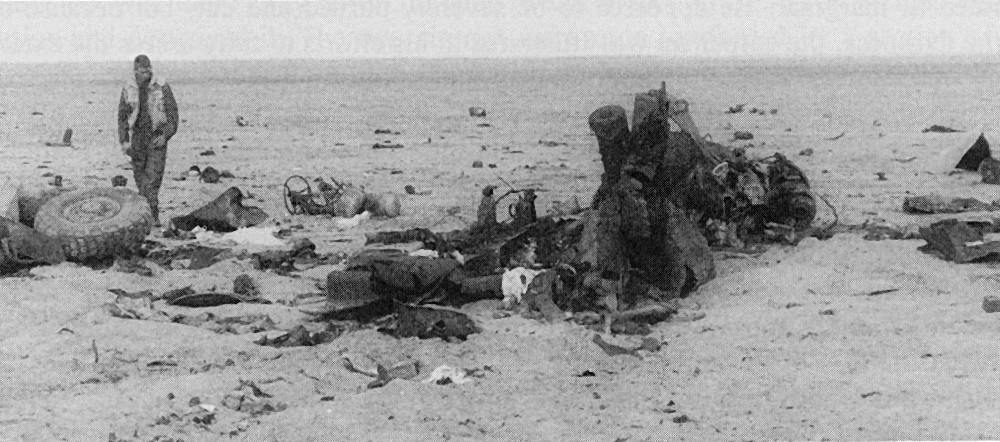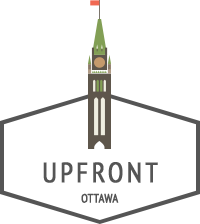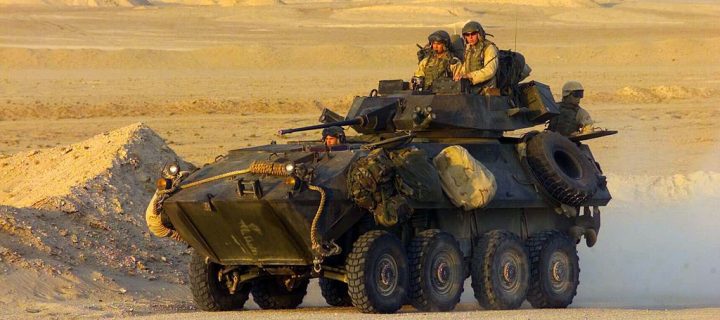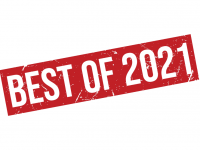Updated February 13, 2017
LAV 25A-1991 GULF WAR-LIBERATION OF KUWAIT
By U.S. Marine Corps - This Image was released by the United States Marine Corps with the ID 021002-M-2706G-003
LIGHT ARMOURED VEHICLES ARE TAKING A BAD RAP, EVEN THOUGH THEY ARE AN ESSENTIAL PART OF THE CANADA-US DEFENCE INDUSTRIAL BASE, SUPPORT/PROTECT OUR TROOPS, AND ARE SUBJECT TO RIGOROUS EXPORT CONTROL REGIMES.
IT IS EASIER TO CRITICIZE THE END USE THAN TO UNDERSTAND THE DECISION-MAKING DILEMMAS CONCERNING the ROLES, CAPABILITIES, and DEPLOYMENTS OF LIGHT ARMOURED VEHICLES.
During the 1980s, the U.S. Marine Corps sought a light armoured vehicle to give them more mobility. The LAV 25 is an Amphibious Reconnaissance Vehicle.
They entered into service in 1983. Canada to the best of my recall was involved in a US-Canada Defence Development and Production Agreement that involved General Motors Diesel Division in London, Ontario, later known as General Dynamics – Land Systems Division.
The U.S army borrowed a dozen LAV 25s for use by the 82nd Airborne for a scout platoon during the 1991 Gulf War. Saudi Arabia was a staging base during that Kuwait, U.N. sanctioned liberation campaign. I recall during the surge and mobilization effort at a major U.S military supply base, where mothers of mobilized troops were carrying out supply logistics work in support of their own and the military effort.
Two things left an indelible impression. The first was that there was a strong sense of cohesion, duty, and service to country and support for the troops. In my capacity at the time, the second striking reality was that Canada had a Crown contract, Common Defence Development and Sharing Arrangements and Performance Delivery obligations on Light Armoured Vehicles with its very important ally.
The Commanding Officer made that point to me when he referred to the supply, support, and maintenance of the Light Armoured Vehicles-He said; “I’ve got your number,” putting a different complexion on the matter of contract fulfilment.

By Lt. Col. Charles H. Cureton- U.S. Armed Forces, Public Domain
THE ROLES LIGHT ARMOURED VEHICLES HAVE ARE MULTIFOLD. THEY HAVE PROVIDED YEOMAN SERVICE AND PROTECTION IN UNITED NATION’S SANCTIONED WARS, AS WELL AS IN SUPPORT OF INNOCENTS DURING DOMESTIC AND INTERNATIONAL CONFLICTS AS WELL AS IN DISASTER RECOVERY AND RELIEF AT HOME AND ABROAD.
The light armoured vehicles continued service in the Gulf War, the wars in Iraq and in Afghanistan as well as the Invasion of Panama in 1989 before that, according to the public record. The vehicle and variants thereof are planned to remain in service with the Marine Corp until 2035.
Canada and the U.S. exercise mutual export control mechanisms. We share in some cases data rights to advancing technologies, special tooling, and production assets. The F35 Aircraft is one example, Light Armoured Vehicles are another. In short, these arrangements help to sustain production capability and defence preparedness.
Separately, for those who fly all over the world to U.N. conferences on global matters, it may be worth a thought that the Boeing 747 revolutionized air transportation. The 747 was a losing bid in a military airlifter contract against the C5 Galaxy. Boeing wing parts and structures are made in Canada among other components and instrumentation, even to the extent of maintaining and supporting Air Force One.
According to the public record, the Canadian Army lost 13 Light Armoured vehicles and more than 159 were damaged during the mission in Afghanistan. They also lost 34 other vehicles and 359 were damaged by roadside bombs or enemy fire.
In 1991, very roughly speaking, the Canadian Armed Forces rationalized its 1960-70 era armoured protected personnel carriers to provide for multi-roled combat vehicles built on a common chassis, later known as the LAV 111. This became the third generation of the light armoured infantry vehicle that is virtually the same one currently under contract with the Saudi Government.
The LAV 111 was developed in Canada and entered into service in 1999. They are the primary mechanized infantry vehicles of the Canadian and New Zealand Armies. In 2009, the Canadian Department of Defence announced $5 billion of spending to enhance, repair and replace its Light Armoured vehicles.
In 2011 the Canadian Government announced a $1.1 billion contract with General Dynamics Land Systems of London, Ontario to upgrade their light armoured vehicles by improving protection against mines and improvised explosive devices which had caused a number of Canadian deaths in Afghanistan. These upgrades were expected to extend their useful life until 2035.
On February 1, 2013, 66 upgraded vehicles were delivered. According to the public record, the success of the upgrade program coupled with budget pressures lead to the decision to cancel the CLOSE COMBAT VEHICLE variant. The upgrades included larger turrets, more powerful engines, increased armour protection, steering and brake systems, and a variety of control, low-light sighting, and display systems.
The LAV 111 and its variants have supported United Nations missions in Ethiopia and Eritrea, Kosovo, Bosnia and Herzegovina, Haiti and Afghanistan. They were also engaged in Operation Lotus on the request of the Government of Quebec, the 2011 Lake Champlain and Richelieu River Floods, used in the Response to the 2011 New Zealand Earthquake as well as the 2009 Napier Shootings there.
Additionally, LAVs are utilized in the Columbian Armed Conflict that started in the 1960s. This is an ongoing low-intensity asymmetric war where factions are fighting each other to increase their INFLUENCE over Columbian territories. The Columbian Government, paramilitary groups, crime syndicates, and left wing guerillas such as the Revolutionary Armed Forces of Columbia and the National Liberation Army are at odds.
All this to say that national and international arms treaty activists have claimed the recent Light Armoured Vehicle deal with Saudi Arabia deal broke the letter and spirit of Canada’s own export controls and compromised them in the process. The Minister of Global Affairs signed the export permit on April 8th 2016 to allow partial delivery on a 15 year contract worth $15 billion to the SAUDI NATIONAL GUARD.
Meanwhile the Saudi Light Armoured vehicle deal became a contrived almost intractable distraction to put the previous and current governments on the spot amid displays of handwringing and indignation from those who want to “reinvigorate” Canada’s stand on human rights and accede to the ratification of the U.N. Arms Trade Treaty. Politics entered the fray.
In the backdrop of Canada’s new training role in IRAQ, further distractions occurred while CANADA withdrew its NATO contribution of CF18s from the fight against ISIL on an election promise. Subsequently, definition contests took place in the House of Commons concerning the meanings of combat, war, and genocide, as well as interpretations expressed in INTERNATIONAL LAW.
That aside, there is a plethora of UN Human Rights Resolutions where the U.N. is seeking to tighten international laws, monitor arms and conflicts, and establish penalties. After a quick review of the preponderence of conferences, feedback-feedforward sessions and hearings in Geneva and other such places, it seems that human rights is an industry that has a life and world of its own, just saying.
What we do know from a coalition of at least Amnesty International, Ploughshares and the Rideau Institute, among other representations, a rhetorical litany of concerns about the Middle East, abuses of human rights there and opposition to the Saudi LAV deal were presented at a news conference on Wednesday April 27th 2016.
The Group generally calls itself CJPME-Canadians for Justice and Peace in the Middle East. It is a non-profit and secular organization bringing together men and women of all backgrounds who LABOUR TO SEE JUSTICE AND PEACE TAKE ROOT AGAIN IN THE MIDDLE EAST, according to its website:
Its mission is: TO EMPOWER DECISION MAKERS to view all sides with fairness and to PROMOTE EQUITABLE AND SUSTAINABLE DEVELOPMENT OF THE REGION. Perhaps it seems more a matter of PROMOTING PEACE AND DEVELOPMENT as compared to PEACEMAKING and DETERRENCE in the reality of asymmetrical conflicts, civil unrest and war in the region.
That said, an open letter by the proponents to the Prime Minister dated April 1st 2015 essentially asked for the reconsideration of the Saudi Arabian Light Armoured Vehicle contract sighting human rights risks and abuses then subsequently citing YEMEN as well, where a military mission is underway, Bahrain encounters aside.
By extension, it seems some are making the case that Canada’s EXPORT CONTROLS REGIME is somewhat wanting or misused and the LAV contract, the vehicle in particular, aids and abets the RISK of human rights abuse in Saudi Arabia. It seems given the international state of play in the region, the tail could well be wagging the dog, just saying.
It would seem also on the face of the matter that advocates and/or dissidents are attempting to foist or manipulate LOFTY U.N. HUMAN RIGHTS PRINCIPLES and IMPRECISE goals on the back of Canada’s GOVERNMENT-TO-GOVERNMENT contract with Saudi Arabia, written in the name of Her Majesty.
Their beef or critique seems to boil down as to whether or not Canada is capably MANAGING RISK and or effectively exercising the tenets of Canada-US export protocols on the premise U.N. HUMAN RIGHTS VIOLATIONS are occurring in the region, Saudi Arabia in particular.
All the while coalition military missions and actions against terrorism are taking place in the region. ISIS/ISIL multi-nation infiltrations and attrocities are very much on the RESOLUTION TABLE of the UNITED NATIONS ITSELF. Saudi Arabia is a key ally in the Coalition of Nations in that fight.
As for contractual protocols and the LAV 111 in question, government-to-government contracts carry assurances of excellence in contracting, delivery, as well as performance guarantees by the CROWN. General Dynamics – Land Systems Division is a SUB-CONTRACTOR to the CROWN. Accordingly, the delivery and use is a RISK MANAGEMENT issue rather than a HUMAN RIGHTS issue, U.N. declarations concerning ISIS and ISIL aside.
The Department of Global Affairs has given assurances on the matter of RISK and the exercise of LEVERAGE both in the event of PROVEN Human Rights violations and remedial action through the Crown’s delivery performance obligations in the sovereign contract, weighing in on diplomacy and “responsible conviction” as well.
For all that, on May 11th 2016, according to the Globe and Mail article by Steven Chase, Saudis used armoured vehicles to suppress internal dissent. Footage, dated from 2011-2015, provided by “SAUDI Human Rights Activists,” showed SAUDI-BUILT Armoured Vehicles in situ with masked Shia Muslim DISSIDENTS at odds with the presence of the vehicles, thus raising QUESTIONS about the intended use of military type goods.
According to the article, the SHIA “Dissidents” want Canada to suspend shipments of “COMBAT VEHICLES.” This further muddies the waters of “equitable stable development.”
The article continues, the Saudi population consists of close to 85% Sunni and 15% Shia in the eastern oil-producing province. The Saudi Government regularly says raids and operations in the eastern province are necessary to combat TERRORISM. This inserts the matter of internal and external security obligations, the responsibility of a sovereign nation.
Also reported, analysts and activists say that SHIA protesters have grown more militant in recent years. Others refer to local pushbacks by the Shia against the SAUDI Government. In that context and according to the Globe and Mail article, eastern provinces began arming themselves with weapons such as guns after the Saudis killed “protesters” in the region some 4-5 years ago.
Some comment concerning the Shiite faction and associations with IRAN, involvement in the northern IRAQ fight with the Kurds and involvements in Syria have been “discussed” in the opinion piece about the fight against ISIS-ISIL: Withdrawal of CF18s from the NATO led Middle East Bombing Mission dated 16th February 2016. Suffice to say Saudi Arabia plays a pivotal role in the region.
There is no need here to question the Sovereignty of Saudi Arabia any more in my view than it is for the peace-sustainable development and anti-arms groups to stretch a Light Armoured Vehicle Contract to the LETTER, SPIRIT, or INTENT associated with INTERNATIONAL HUMAN RIGHTS COMPLIANCES, well intentioned as that may be.
Besides that, a recent “challenge” to the Light Armoured Vehicle Contract versus human rights on behalf of a McGill University Group did not stand up in a court of legal standing in CANADA.
Meanwhile, the Pearson Institiute is now seeking a few million bucks, previously axed by the former Conservative Government, to jump on the bandwagon in an attempt to restart its PEACEKEEPING CAMPUS TRAINING in the name of capitalizing on our FIELD STRENGTH and expertise from PEACEKEEPINGS past.
NO MATTER THOSE FACTS, THERE HAVE NOT BEEN ANY SIGNIFICANT PEACEKEEPING MISSIONS IN QUITE SOME TIME. WAR IS RAGING IN THE MIDDLE EAST AND TERRORISM ACCORDING TO THE U.N. IS A SPREADING INTERNATIONAL THREAT TO PEACE AND SECURITY. Surely PEACEMAKING is the current international and allied focus!
AS IT HAPPENS SAUDI ARABIA IS A CENTRAL AND MAJOR PLAYER IN THE MATTER OF RESOLVE IN THE REGION AND IN THE FIGHT AGAINST ISIS/ISIL. President Obama, the Coalition leader, is pressuring for more support from the Allies and particularly those in the region, Saudi Arabia and other Arab States in particular.
Kerry in Saudi Arabia for talks on Syria, Libya, Yemen– May 15, 2016
Matthew Lee – Canadian Press
Excerpts: JEDDAH, Saudi Arabia – U.S. Secretary of State John Kerry on Sunday held on May 15th 2016 with Saudi Arabia’s King Salman about the conflicts in Syria, Libya and Yemen. His talks with the crown prince, deputy crown prince and foreign minister also comes at a critical time in efforts to rein in fighting and encourage political dialogue in all three countries, wracked by VIOLENCE for years.
The situation has been complicated further by the intermingling of some Western and Arab-backed rebels with groups such as the al-Qaida affiliate, known as the Nusra Front. The U.N. has designated them a terrorist organization and therefore are not covered by the fragile truce in Syria. SAUDI ARABIA and the U.S. have rejected attempts by Russia to get those rebels placed on the U.N. terrorist list.
The 17-member INTERNATIONAL Syria Support Group includes Turkey, Iran, Saudi Arabia and others. The August deadline that the U.S. has set for STARTING A POLITICAL TRANSITION is a target, not a drop-dead endpoint for negotiations, Kerry said.
The U.N.-led talks have been stalled since the opposition suspended participation last month in protest. The U.N.’s humanitarian aid co-ordinator for Syria has expressed dismay about “disappointing” levels of access so far this month to besieged and hard-to-reach areas.
IN YEMENthe warring parties have been holding U.N.-brokered negotiations in Kuwait to resolve the conflict. A truce began April 10 and has mostly held despite multiple breaches by both sides.The conflict pits the country’s Shiite rebels, known as Houthis, and their allies against President Abed Rabbo Mansour’s government, which is backed by a Saudi-led coalition.
Update: May 17th 2016-Sputnik (Washington)
It has been reported May 16th, 2016 that Canada has made the decision to join the International Syria Support Group at the Meeting in Vienna today May 17th 2016-Foreign Minister Stephane Dion says.
“I am proud that Canada will NOW be at the International Syria Support Group” “Together we can and must find a diplomatic solution to this CONFLICT.”
He said the INVITATION for Ottawa to join the GROUP signals that Canada is “making a difference” in countering the ISLAMIC STATE, outlawed in many countries including the UNITED STATES and RUSSIA and bringing PEACE to IRAQ and SYRIA.
It is expected that the International Syria Support Group (ISSG) will adopt a DECLARATION after the meeting. It will include measures to maintain ceasefire in the whole of Syria and facilitate humanitarian access, a diplomatic source in one of the delegations told Sputnik.
The ISSG, a panel of countries was formed in November 2015 shortly AFTER the beginning of Syria Peace Talks. It is seeking to end bloodshed in Syria. The Group is Co-Chaired by RUSSIA and WASHINGTON. The European Union, THE ARAB LEAGUE, China, Iran, Turkey, and the United Nations are members of the group.
Defence Industry Daily: February 13TH 2017: Canada’s Light Armored Vehicle LAV III Upgrade Program will see General Dynamics Land Systems upgrade 141 Light Armored Vehicles. Valued at $308 million, the upgrades will bring the vehicles up to the latest LAV 6.0 standard, improving the vehicles’ performance and survivability while reducing long-term maintenance costs. The LAV III is the third generation of light armored vehicles used by Canada’s army.
—
Kevin Murray is a former Canada-U.S Planned Production Officer and Manager of Operational Services with the Canadian Commercial Corporation. As a former Trade Commissioner with Foreign Affairs and International Trade he had extensive exposure to arms trade opponents as well as experience in marshalling export permits through the extremely professional spheres of peer influences and interests in the Departments of Government.
Related Articles:
Withdrawal of CF18s from the NATO-led Middle East Bombing Mission







